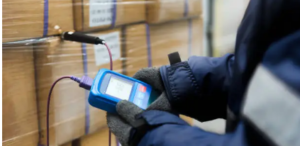Industrial refrigeration process Melbourne is a system for cooling products and processes. It can be used for machines, operating materials, and whole production lines.
This ARBS presentation will demonstrate substantial energy savings from using dry expansion refrigerant feed, as opposed to liquid overfeed, in large-scale ammonia refrigeration plants. The savings are based on practical energy performance measurements across several accurate installations. For more information about the industrial refrigeration process Melbourne, click here.
Refrigeration
 Industrial refrigeration systems are vital to many businesses and industries, allowing them to preserve perishable goods. They also protect products from environmental hazards and help them maintain their quality. It is important for businesses like restaurants that require high-quality food to ensure their customers’ satisfaction.
Industrial refrigeration systems are vital to many businesses and industries, allowing them to preserve perishable goods. They also protect products from environmental hazards and help them maintain their quality. It is important for businesses like restaurants that require high-quality food to ensure their customers’ satisfaction.
The refrigeration process uses a refrigerant, a liquid that changes state to absorb and release heat. It is circulated through a compressor that compresses and pumps it. It then passes through a heat exchanger to absorb the heat from the surrounding air and water. It then circulates through the refrigerator, absorbing and releasing the heat to keep it at a lower temperature.
Refrigeration is essential in the production of many products and processes, such as in the dairy industry, where it helps to prevent spoilage and extend shelf life. In addition, it is an essential tool for storing and transporting temperature-sensitive foods and beverages. Refrigeration is also used to cool food processing equipment.
Cooling
Industrial refrigeration systems are widely used in food processing, storage, and transportation to ensure safe & and fresh products for consumers. Increasing food demand is driving the market for these solutions, and stringent regulations on food safety are pushing product adoption. This combination is expected to fuel the growth of the industrial refrigeration systems industry in 2023 and beyond. For more information about the industrial refrigeration process Melbourne, click here.
The industry relies on energy-efficient and environmentally friendly refrigeration systems to maintain stable temperatures throughout the supply chain. As a result, many businesses have switched to eco-friendly refrigerants and innovative refrigeration technologies. In addition to energy efficiency, these systems offer improved operational capabilities and reduce maintenance costs.
GEA’s CO2 climate solutions are designed to help industrial refrigeration operators save money while protecting their investments. These solutions are built to deliver life cycle climate performance rather than the lowest capital cost and feature a modular design. They can be installed on new or existing equipment and are easy to operate.
Heating
Industrial refrigeration systems are essential for storing & and transporting perishable food items worldwide. The industry is proliferating due to the increasing global population, changing consumer lifestyles & an increased demand for ready-to-eat food products—additionally, strict regulations regarding food safety drive product adoption in the food & and beverage industry.
Commercial refrigeration systems are complex equipment that must be well-designed and selected to ensure reliable operation and a high return on investment. These systems are the heart of many cold storage, food processing, distribution and manufacturing facilities and contribute to significant capital & and operational expenses every year.
Technological advances, including eco-friendly refrigerants & and the integration of intelligent technologies, have made industrial refrigeration systems more efficient and environmentally responsible. Moreover, new technologies like remote monitoring & and predictive maintenance have boosted system performance & and uptime. It has shifted the focus towards energy efficiency, which is expected to drive the market.
Ventilation
Industrial refrigeration involves cooling a variety of products and processes. It includes cold food storage, dairy processing, beverage production and ice rinks. Industrial refrigeration systems have to be energy-efficient, safe and user-friendly. They also need to meet various state regulations and legal requirements. For more information about the industrial refrigeration process Melbourne, click here.
The circulating refrigerant enters the compressor as a low-temperature and low-pressure saturated vapour and leaves as a high-temperature, high-pressure superheated vapour. That is because the refrigerant is entropically compressed at constant entropy. As the steam exits the compressor, it passes through the condenser, where it rejects the excess heat. It then cools and condenses into a liquid. It then flows into the receiver, where it’s stored as a reservoir for the system to maintain pressure and perform under varying refrigeration loads.